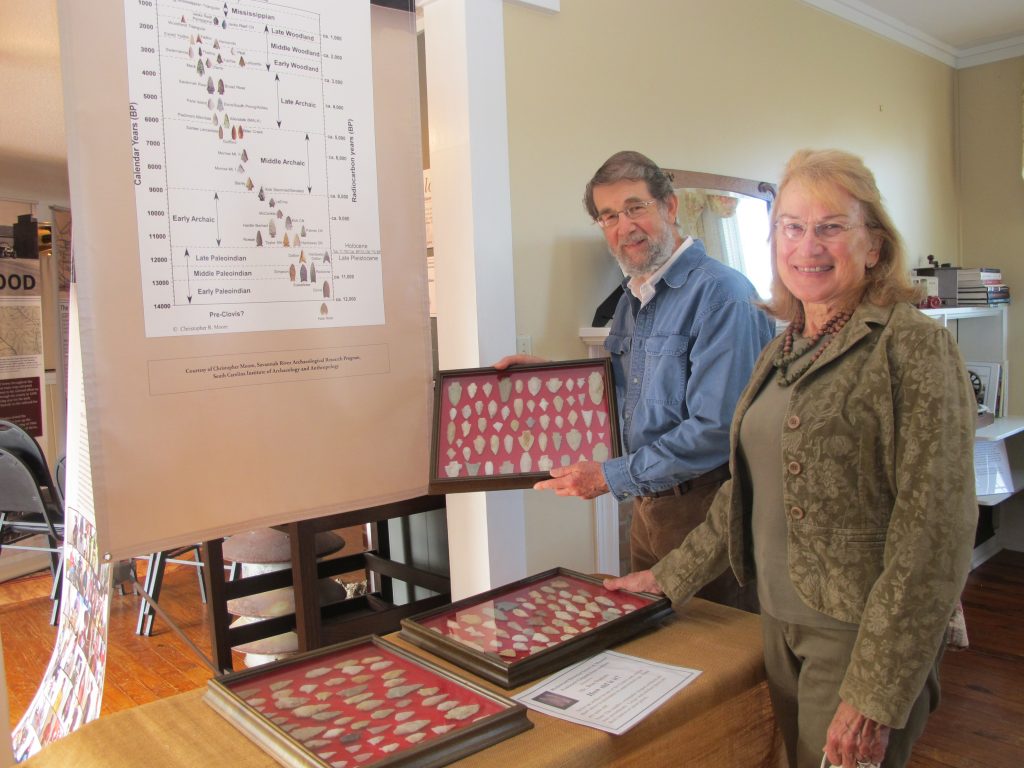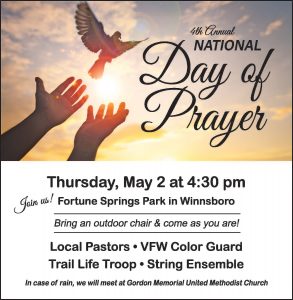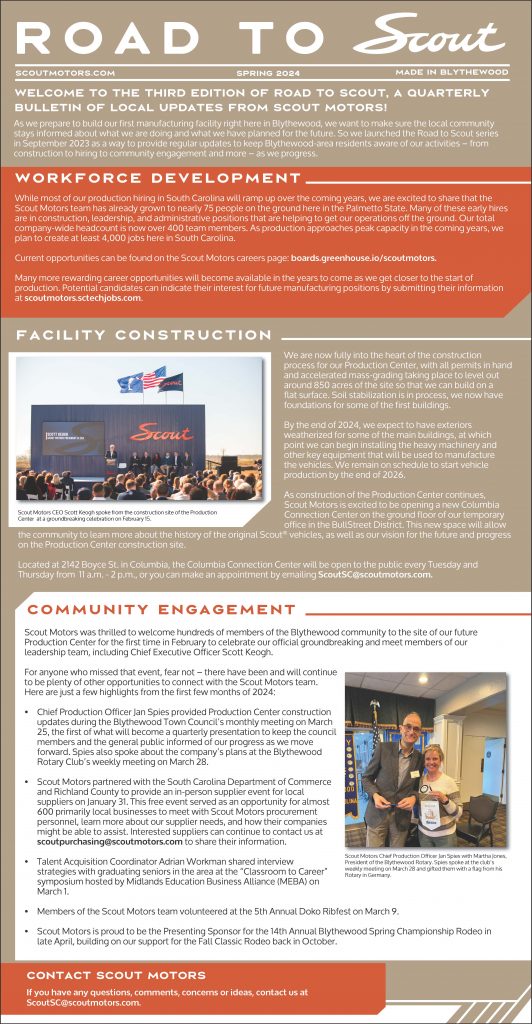
BLYTHEWOOD – The third and final day to explore the Blythewood Historical Society’s fascinating South Carolina Native American prehistory exhibit will be Sunday, Oct. 25, from 3 – 5 p.m., at the Langford-Nord House in downtown Blythewood.
Blythewood’s Leland Ferguson, retired Director of the USC department of archeology, organized the exhibit which takes visitors on a tour of the history of the North American Indians beginning about A.D. 1521 in South Carolina.
Upon entering the exhibit, visitors are guided by Ferguson through a series of giant posters hung from the ceiling around the room featuring stories and photos depicting the Native Americans through the different ages, with a focus on South Carolina Native Americans.
Known by many names including American Indian and Native American, the exact ethnic identities of the indigenous peoples in South Carolina remain somewhat obscure. Visitors to the exhibit learn that no human cultures are known to have occupied North American prior to about 25,000 years ago.
Documents from early historic times indicate dozens of linguistically and ethnically diverse Native American communities called South Carolina home.
The first poster sets the stage for the tour, depicting Native American history from the Prehistoric Era which, as defined by archaeologists, begins around 19,000 years ago during the Ice Age until about 300 years ago.
An introductory poster explains that Spanish explorers entered Winyah Bay near Gorgetown on the northern South Carolina coast and encountered the Chicora Indians who lived around the mouth of the Pee Dee River.
This initial contact with Native Americas sparked additional exploration and settlement by the Spanish and to a lesser degree the French until A.D. 1587.
During the tour, Ferguson explains that diaries, letters, official records, maps and sketches from this timeframe provide the first European insight into the lives of Native Americans in what is now the southeastern United States. As visitors continue around the room, posters show how Native Americans’ ways of life were irreversibly disrupted and damaged over time.
In addition to the history lesson included in the exhibit, a local collection of well-formed arrowheads, tools and cutting instruments are on display. The collection was donated to the exhibit by Blythewood’s Dan Daniels who collected them throughout his lifetime.
The exhibit is part of an exhibit entitled “Share a Little of that Human Touch: The Prehistory of South Carolina.” created by the Native American Studies Center, USC Lancaster. It is funded by the SC Humanities Council; USC Lancaster Office of the Dean; USC Office of the Vice-President for Research; and the Native American Studies Center.
The Langford-Nord House is located at 100 McNulty Road in Blythewood. For more information, please contact Margaret Kelly at 803-333-8133 T,W or Th 9:00 to 4:00.
To allow for social distancing, small groups will be allowed in to view the exhibit, with masks required. The event is free and open to the public












